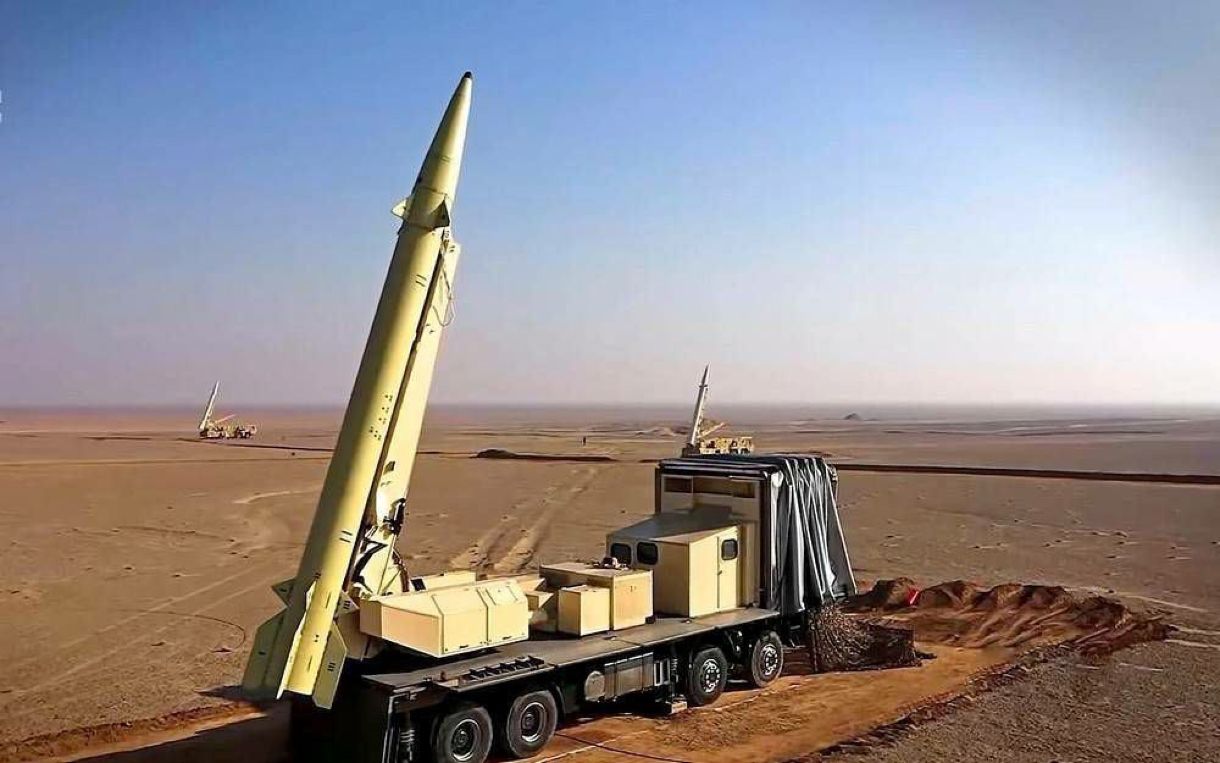Has Iran sent ballistic missiles to Russia? If a Reuters report is to be believed, Iran has indeed provided Russia with ballistic missiles, but the US does not think so. Have the Iranians pulled back in fear of more sanctions?
Putting all speculation to rest, Iran said on February 23 that it had not given ballistic missiles to its partner Russia. The announcement follows a stern warning of severe consequences issued by the United States.
“Despite no legal restrictions on ballistic missile sales, Iran is morally obligated to refrain from weapon transactions during the Russia-Ukraine conflict to prevent fueling the war,” Iran’s mission to the United Nations said in a post on Platform X. “(That) is rooted in Iran’s adherence to international law and the UN Charter,” it added.
Earlier this week, Reuters reported — citing six sources — that Iran has given Russia a significant number of potent surface-to-surface ballistic weapons, strengthening the military alliance between the two countries, both of which are under US sanctions.
The report noted that the shipments started in early January following an agreement reached by Iranian and Russian military and security officials’ discussions in Moscow and Tehran late last year.
🇮🇷🇺🇸IRAN: WE WOULDN'T DREAM OF GIVING RUSSIA MISSILES; THAT WOULD BE ILLEGAL AND IMMORAL
The U.S threatened Iran with a "swift and severe" response if reports they supplied Russia with ballistic missiles were true.
Their UN representative denied the claims:
"Despite no legal… https://t.co/ExVw3f6rQn pic.twitter.com/1OpZyirCcx
— Mario Nawfal (@MarioNawfal) February 23, 2024
Three Iranian sources reportedly informed the media that Iran was supplying over 400 missiles, many of which are from the Fateh-110 family of short-range ballistic weapons, which includes the Zolfaghar.
According to specialists, this road-mobile missile can hit targets between 300 and 700 kilometers (186 and 435 miles) away.
While the reports caused a frenzy in the international community, the US White House National Security spokesperson John Kirby said, during a press briefing on February 22, that Washington had not received proof that missiles had been transferred from Iran to Russia.
“In this press reporting, the Iranians are indicating that they will ship ballistic missiles to Russia, and we have no reason to believe they will not follow through,” Kirby said. “For our part, we will take this matter to the UN Security Council,” he noted. “We will implement additional sanctions against Iran. And we will coordinate further response options with our allies and partners in Europe and elsewhere.”
Iran’s statement comes right after the warning, even though it has been supplying its lethal Shahed-class kamikaze drones that have, in turn, already infuriated the United States. “In response to Iran’s ongoing support for Russia… we will be imposing additional sanctions on Iran in the coming days, and we are prepared to go further if Iran sells ballistic missiles to Russia,” Kirby said.
Iran has provided Russia with a large number of powerful surface-to-surface ballistic missiles, six sources told Reuters.
Iran's provision of around 400 missiles includes many from the Fateh-110 family of short-range ballistic weapons, such as the Zolfaghar, three Iranian… pic.twitter.com/Fr0zQ6RR9h
— Special Kherson Cat 🐈🇺🇦 (@bayraktar_1love) February 21, 2024
Although the limitations imposed by the UN Security Council on Iran’s sale of some drones, missiles, and other technologies ended in October, the United States and the European Union have maintained sanctions on the country’s ballistic missile program to dissuade Tehran from supplying them to Russia and its proxies across the Middle East.
Moscow’s acquisition of Iranian weaponry has been a significant factor in Russia’s attacks on Ukrainian infrastructure and cities. And, if the ballistic missile delivery is verified, it would indicate much closer coordination — a prospect that the United States intelligence community has long been warning against.
On its part, Russia has been making provisions to acquire ballistic missiles from allies like North Korea and Iran in light of rumors that it had exhausted its stock with its relentless aerial assault against Ukraine; earlier this month, EurAsian Times reported the use of the North Korean KM-23 ballistic missile which is believed to be an analog of Russia’s Iskander. Several visual signs of the missile’s wreckage have since appeared on social media.
US officials stated in December 2022 that Iran was due to receive the cutting-edge Russian-made Su-35 Flanker-E aircraft in exchange for providing arms, including short-range ballistic missiles, to Moscow. Interestingly, Iran has yet to receive a single Su-35 combat aircraft despite its consistent arms assistance for Moscow.
The reports of Iran deciding to send ballistic missiles to Russia have been around since October 2022. However, there has been no credible evidence suggesting that the missiles were indeed handed over to Moscow’s forces.
Iran’s Ballistic Support for Russia
There is no denying that Russian missiles are technically superior to Iranian ballistic missiles. Instead of using thrust vector control (TVC) and canister launch for steering, the Iranians continue to use fins and cable ducts.

They do not have ABM (anti-ballistic missile) evasion capabilities such as end-game maneuverability; hence, their ballistic trajectory is predictable. The missiles have a track record of success, though. Military experts contend that Iran has attacked US bases in Iraq with some degree of success and accuracy.
Russia has a relatively affordable way to target Ukrainian infrastructure: Iranian ballistic missiles. Some pro-Russian military bloggers suggested that Russia was poised to acquire Iranian missiles as it was looking to use its Iskander ballistic missiles more sparingly and to attack high-value targets. The use of Iranian missiles, according to them, would allow Moscow to overwhelm Ukraine’s air defense systems.
The US Central Command predicted that Iran possessed more than 3,000 ballistic missiles in its arsenal in 2022. According to analysts, the precision, range, lethality, maneuverability, and survivability of Iran’s Fateh class missiles have all improved in recent years.
- Contact the author at sakshi.tiwari9555 (at) gmail.com
- Follow EurAsian Times on Google News




